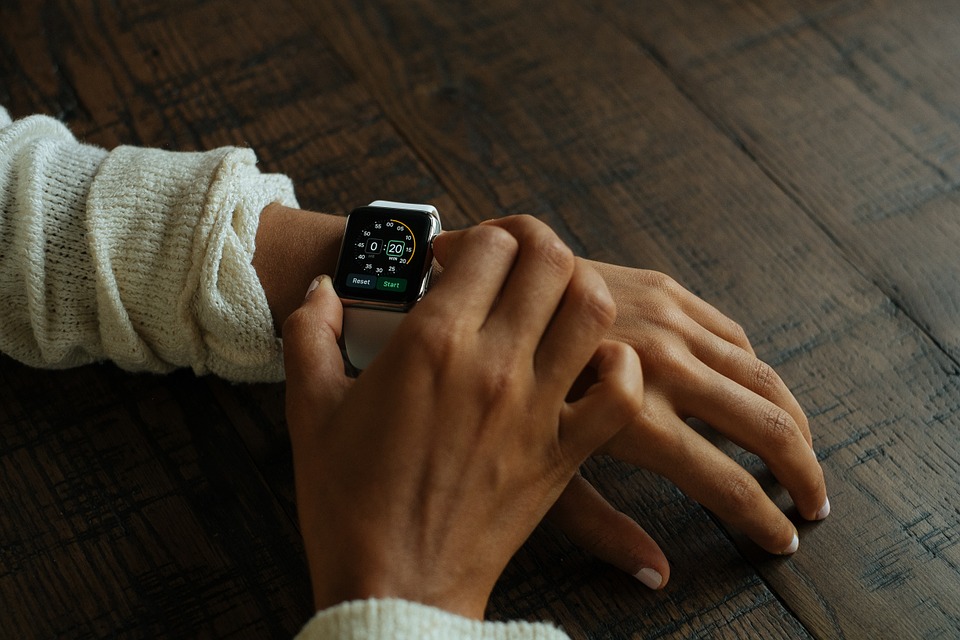At Harvard we enjoy keeping up-to-date with the latest technology innovations affecting the business and consumer world. According to
IDC, the wearables market is expected to double by 2021, so we went to
the Wearable Technology Show recently to learn about (and try out) the newest IoT, VR and augmented reality tech which is breaking into the tech market.
Here are the top five innovations we saw which are likely to change the way we live our lives…
Employee training is moving to VR and AR experiences
One of the main trends from the show was companies investing in VR and AR, not for their consumer products, but for their staff. A study by
Blippar found those who studied using AR performed 150% better than those using paper-based training materials. Employees are increasingly likely to have training for labour intensive jobs through VR/AR so that they can visualise their environment and equipment in various situations.
This removes the risk of physical bodily harm and can save on time and resources which are often in short supply.
Walmart is already using virtual reality to
train its employees. Partnering with virtual reality start up, STRIVR, it uses VR in its training academies to aid employees in experiencing real work scenarios. From a messy aisle to a holiday rush, employees can experience it all and learn how to effectively respond to such situations.
IoT ensures humans are not left behind in the shift to automation
There is a lot of talk about robots being a threat to jobs due to the advancements of automation and AI. But many of the developers we spoke to at the Wearable Technology Show had a more collaborative perspective on the relationship between humans and robots. They suggest that wearables are the bridge, ensuring that humans can keep up with the increasing demands for efficiency. Experts at
Goldsmith’s University claim have discovered that wearable technologies available boosts productivity by 8.5%.
Making our pets smarter
Smart technology is also being introduced for our pets, from GPS trackers to smart litter boxes. Approximately
15% of lost
cats and dogs are found using microchips, identification collars or other pet tracking IoT devices, and that figure is growing annually. The analyst firm
Berg Insight estimated that
300,000 pets currently wear GPS trackers in Europe and North America.
A
2016 survey found
95% of pet owners see their pets as part of their family, so investing in smart technology which will provide information about a pet’s health and safety is likely to be a popular choice.
Pet tech is a booming industry, with the global market predicted to reach $2.36bn (£1.84bn) by 2022, according to Grand View Research.
Health taken into your own hands
The greatest use of wearables we saw at the Wearable Technology Show was for health reasons. There was an array of smart watches, digestible sensors, connected contact lenses, all to put the monitoring of health into the hands of the consumer. Steps, heart rates, sleep, and even baby movements can now all be counted, measured and collated, creating very useful collections of data.
One example is how wearables are being used to treat the nearly
8 million adults who suffer from PTSD a year. Traditionally, doctors use “exposure therapy” which push patients to recount their traumas, visualise it in their imaginations and explain to the doctor what is happening as they experience the stressful scenario.
Mixed Reality is starting to revolutionise
MR integrates the physical and the digital worlds into one using optical hardware and AI. It combines the aspects of VR and AR by allowing users to see the real world while also seeing believable, virtual objects.
Three surgeons from Mumbai and London became
3D digital avatars in an operating theatre at The Royal London Hospital and were then able speak to one another in real-time to discuss on how to operate on a patient with the aid of pre-uploaded scans.
We are likely to see more and more companies investing in MR to work collaboratively with others overseas and digitalise the physical world.
These are just some of the latest trends we came across at the Wearable Technology Show 2018. Our relationship with technology is changing quickly, and the data collated through IoT, mixed reality etc is affecting the way we look after our health, monitor our pets, and conduct our working lives.
Do you see these trends becoming more present in your life? What future developments do you think will become a part of our daily routines?

